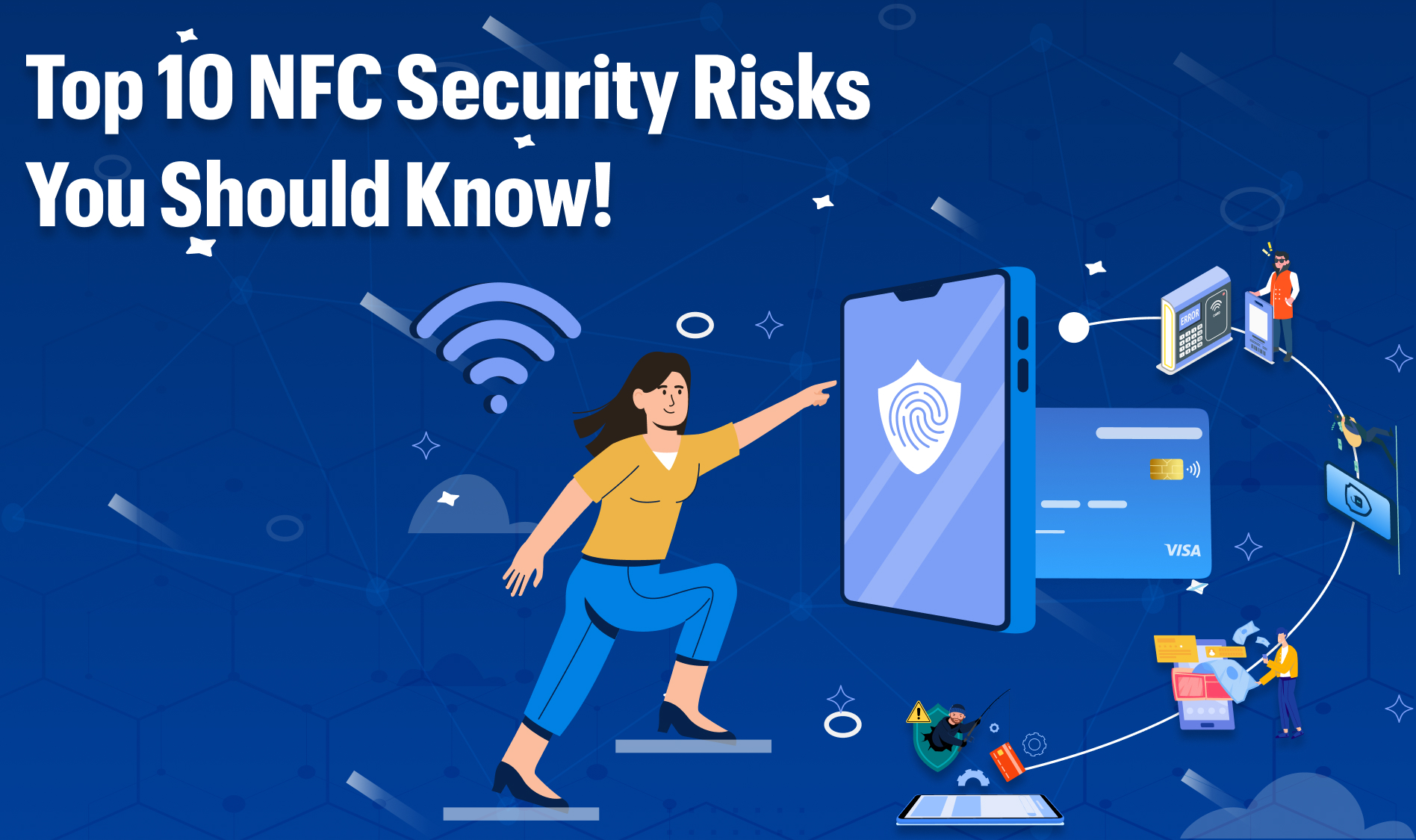
Near Field Communication (NFC) has made payments faster and easier, letting you tap your phone, use a mobile wallet, or pay with a contactless card in seconds. In the UAE, where digital payments are growing fast, NFC is now common in supermarkets, restaurants, and even small shops. No need to carry cash—just tap and go!
But while NFC is super convenient, it’s important to stay aware of security risks. Just like any digital technology, there are ways hackers can try to take advantage. The good news? You can take simple steps to keep your payments safe.
In this blog, we’ll explore the top 10 NFC security risks and, more importantly, how to protect yourself while enjoying the ease of contactless payments.
Eavesdropping occurs when a hacker intercepts the communication between two NFC devices. Since NFC operates over a short range (usually a few centimeters), the risk is lower than other wireless communication methods. However, skilled hackers with specialized equipment can still intercept data.
How to Stay Safe:
A relay attack happens when a fraudster intercepts NFC communication and relays it to another device to make unauthorized transactions. This type of attack can be carried out by two hackers working together, where one is near the victim and the other near a payment terminal.
How to Stay Safe:
Hackers can manipulate the data being exchanged during an NFC transaction, leading to altered transaction amounts or unauthorized access.
How to Stay Safe:
Contactless payment fraud can occur if someone gets too close to your NFC-enabled card or phone and initiates an unauthorized transaction.
How to Stay Safe:
Malicious software can be used to exploit vulnerabilities in NFC-enabled smartphones, allowing hackers to gain access to personal and financial information.
How to Stay Safe:
If your NFC-enabled phone or card is lost or stolen, someone could use it to make unauthorized payments.
How to Stay Safe:
Skimming devices can be used to steal NFC card information and create duplicate copies for fraudulent use.
How to Stay Safe:
Since NFC payments are often used on smartphones and cards, physical theft of these devices can result in unauthorized access to your financial data.
How to Stay Safe:
Fraudsters can set up fake payment terminals to capture NFC payment information from unsuspecting users.
How to Stay Safe:
Attackers can use NFC sniffing tools to collect data from your device and use it for fraudulent activities.
How to Stay Safe:
The UAE has been at the forefront of digital payment innovation, with businesses and consumers rapidly adopting NFC-based solutions. Tap on Phone technology, which allows merchants to accept payments directly on their smartphones, is gaining popularity among small businesses and taxi services.
The UAE's regulatory bodies, such as the Central Bank of the UAE, have implemented strict security measures to ensure safe digital transactions. However, users must also take precautions to protect themselves from fraud.
By 2026, NFC technology will be a normal part of everyday life, making things easier and more convenient. Paying for coffee, unlocking doors, or even starting your car will happen with a simple tap—no more carrying multiple cards or remembering passwords. Security will also be much stronger, with better encryption and biometric authentication, so people can tap and pay without worrying about fraud.
NFC payments have made transactions faster and more convenient, but they also come with security risks. By understanding these risks and taking proactive measures, you can enjoy the benefits of contactless payments while staying protected.
In the UAE, where digital payments are becoming the norm, adopting secure payment practices is essential for both consumers and businesses. Whether you're using Tap on Phone, mobile wallets, or contactless cards, always prioritize security to prevent fraud and unauthorized transactions.
Stay informed, stay secure, and enjoy the ease of NFC payments!